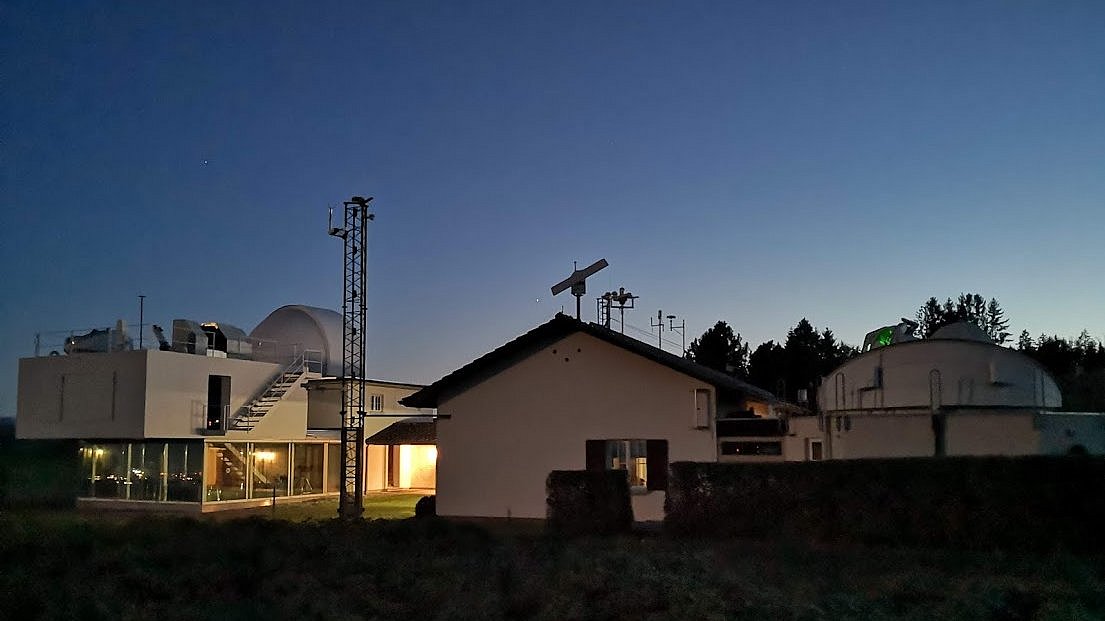The wealth of data gathered by the GRACE and GRACE Follow-On missions has revolutionized our understanding of geophysical processes, particularly in the polar regions. But already early in the missions, it became evident that the estimated values of the Earth’s flattening derived from GRACE were not reliable. These estimates exhibited an unexpected periodic signal of approximately 161 days, and their trends differed from the values obtained through satellite laser ranging (SLR) to geodetic satellites, which has been employed since the 1970s to derive information on the flattening of our planet. The common current practice is to replace flattening term estimates with values obtained from laser ranging to spherical, geodetic satellites. This replacement ensures the accurate utilization of GRACE data products in scientific research.
Prof. Dr. Krzysztof Sośnica and Filip Galdyn, Wrocław University of Environmental and Life Sciences
The GRACE and GRACE Follow-On missions are equipped with onboard accelerometers to accurately measure non-gravitational forces. Unfortunately, during the last few months of the GRACE mission, the accelerometer on one of the two satellites was deactivated most of the time to conserve power. After the launch of GRACE Follow-On, it was observed that the accelerometer on one of the satellites had higher levels of noise compared to the other. The causes an impact on the Earth’s pear-shape parameter describing the imbalance between the poles and led to the recommendation that values of the pear-shape parameter should be replaced by SLR-based values in GRACE solutions.
What are the specific benefits of time-variable Earth gravity field derived using SLR?
SLR data can provide insight into global processes, however, with a much lower resolution to those obtained from the GRACE missions. Nevertheless, solutions based on SLR are exceptionally consistent regarding large-scale changes, considering trends (Fig. 1; left) in polar regions (Fig. 1; right) and extending their outcomes back to the time before the GRACE missions, even in 1990s. Moreover, the SLR-based models do not have a gap between the GRACE and GRACE-Follow-On missions, as well as future missions dedicated to gravity field recovery. The lifetime of geodetic satellites used in SLR is almost unlimited because the satellites do not have any active devices onboard. Instead, all active tracking devices are used on ground-based laser stations which measure ranges to these simple satellites. SLR solutions rely mostly on precise orbit determination of simple, spherical, geodetic satellites and are based on laser ranging and subsequent analysis including proper handling of orbit perturbations.

© Krzysztof Sośnica
SLR observations to geodetic satellites, which have been available for a long time, and the high orbit which prevents a rapid drop in orbit due to atmospheric drag, allow virtually unlimited observation of processes on Earth by observing orbital perturbations.
The availability of an independent technique for global mass changes is also crucial for the independent validation of gravimetric mission results and for the possible combination of these observations to create mixed models, such as SLR and GRACE, that exploit the strengths of each method and e.g. reduce formal error of low degree spherical harmonics (Fig. 2).

© Krzysztof Sośnica
Assessments of long-term ice mass changes are possible when using laser ranging observations. SLR data revealed that the largest ice mass depletion periods in Greenland took place in 2005–2010, 2010–2015, and recently in 2019–2021 with trends of −213.9, −287.2, and −276.1 Gt/year, respectively. The smallest ice mass trends were for 1995–2000, 2000–2005, and 2015–2020 that are equal to +54.3, −15.5, and −75.9 Gt/year. For Greenland and West Antarctica, the period 2010–2015 is characterized by the most enormous ice depletion events, whereas the later 5-year period of 2015–2020 provided a near mass-equilibrium for Antarctica reducing the negative trend and returning to the situation from the 1990s when no significant ice mass changes were observed. Nevertheless, the process of ice loss in Greenland decelerated in 2015–2019 to speed up again afterwards.
Further Reading
Gałdyn, F., Sośnica, K., Zajdel, R., Meyer, U., & Jäggi, A. (2024). Long-term ice mass changes in Greenland and Antarctica derived from satellite laser ranging. Remote Sensing of Environment. https://doi.org/10.1016/j.rse.2024.113994
Gałdyn, F., & Sośnica, K. (2024). Impact of the combination and replacement of SLR-based low-degree gravity field coefficients in GRACE solutions. Progress in Earth and Planetary Science, 11(1). https://doi.org/10.1186/s40645-024-00608-z
SLR Modell im International Centre for Global Earth Models (ICGEM)
